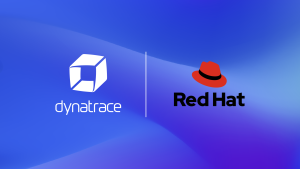The Dynatrace OneAgent Operator for Kubernetes and OpenShift environments was announced at Red Hat Summit 2018. In the blog post accompanying the announcement, my colleague Bernhard explains the use-cases the OneAgent Operator solves and how the OneAgent Operator works.
It’s been almost three months since the announcement in May 2018. Since then, we’ve taken the time to run an Early Access Program (EAP) with customers, hardened the implementation, made the Operator bulletproof for your needs, and extended it with some more useful features requested by our customers.
OneAgent Operator for Kubernetes and OpenShift
With the release of OneAgent v1.149 we’re happy to announce the very first official and fully supported version of the Dynatrace OneAgent Operator. Dynatrace recommends the Operator for full-stack monitoring of your Kubernetes clusters in version 1.9 or higher, and OpenShift environments 3.9 or higher.
What’s included with the OneAgent Operator?
The OneAgent Operator takes care of the lifecycle (deployment, update, and uninstallation) of OneAgent deployments in your Kubernetes and OpenShift environments. Other than the lifecycle management, the OneAgent Operator includes:
- Fine-grained rollout of OneAgent by means of Kubernetes-native mechanisms (nodeSelector and tolerations)
- Support for OneAgent images from certified repositories
- Support for rollout to the hardened Google Container Optimized OS-based GKE (EAP)
- Passing arguments and environment variables to OneAgent containers
- Secure handling of tokens by means of secrets
- Handling of changes to the custom resource
- Easy-to-use templates for deployment to Kubernetes 1.9+ and OpenShift 3.9+
What if I already monitor my environment with a DaemonSet?
There’s no need to immediately update the OneAgent deployment to leverage the OneAgent Operator. If you’re happy with the existing deployment strategy, feel free to keep using it.
However, if you want to leverage automated updates of OneAgent you’ll need to switch to the Operator. You can switch to the Operator by deleting the existing DaemonSet for OneAgent and deploying the OneAgent Operator. Please consult OneAgent Operator documentation for details.
Please note that we’re continuously improving the OneAgent Operator and will add additional features to it that help you to better monitor and organize your Kubernetes and OpenShift deployments.
Other use cases we’re working on
The list of ideas and our customers’ inquiries is long, and we’re working to further extend the use cases covered by the OneAgent Operator. Upcoming versions of the Operator will include (among others):
- Support for multi-cluster environments by leveraging host groups
- Automated integration of pod labels and annotations
- Automated configuration of Istio to allow for OneAgent egress traffic
Your feedback
We’d love to hear from you. Tell us what you think about the Dynatrace OneAgent Operator by providing your feedback at Dynatrace Community.





Looking for answers?
Start a new discussion or ask for help in our Q&A forum.
Go to forum